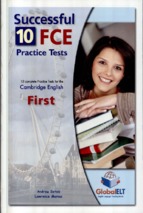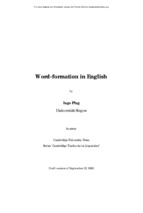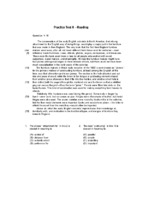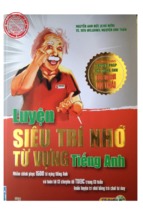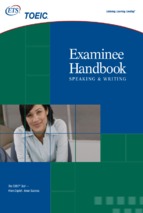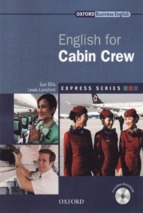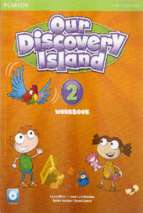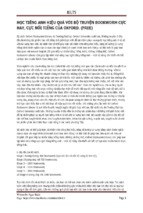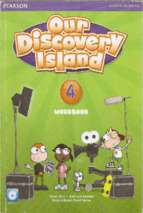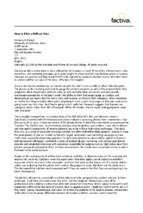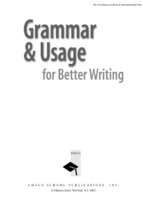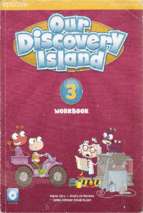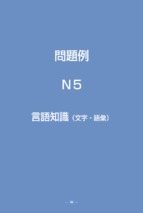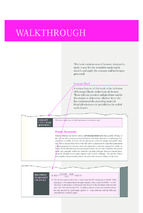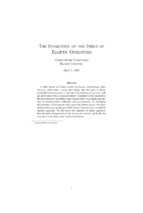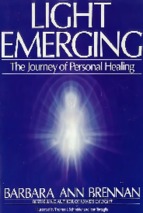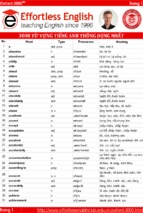Saddlebook eBook
Y
R
A
L
U
VOC AB
HISTORY AND
GEOGRAPHY
WORDS
◆ Historic Turning Points
◆ See the USA
◆ Leaders Then and Now
◆ Wonders of the World
VOCABULARY
in context
JOANNE SUTER
1
VOCABULARY
iin
n ccontext
o n te x t
EVERYDAY LIVING WORDS
HISTORY
MEDIA
AND
AND
MUSIC, ART,
SCIENCE
GEOGRAPHY WORDS
MARKETPLACE WORDS
AND
AND
WORKPLACE
LITERATURE WORDS
TECHNOLOGY WORDS
AND
CAREER WORDS
Three Watson
Irvine, CA 92618-2767
E-Mail:
[email protected]
Website: www.sdlback.com
Development and Production: Laurel Associates, Inc.
Cover Design: Elisa Ligon
Interior Illustrations: Katherine Urrutia, Debra A. LaPalm, C. S. Arts
Copyright © 2002 by Saddleback Educational Publishing. All rights reserved.
No part of this book may be reproduced in any form or by any means, electronic
or mechanical, including photocopying, recording, or by any information storage
and retrieval system, without the written permission of the publisher.
ISBN 1-56254-394-6
Printed in the United States of America
07 06 05 04 03
9 8 7 6 5 4 3 2 1
2
CONTENTS
▼ Introduction .....................
4
UNIT 3 Preview ........................... 55
LESSON
UNIT 1 Preview ............................. 5
LESSON
1 Unit 1 Glossary ....................... 6
2 Time Zones ............................ 9
3 The Remarkable Road of
the Inca Empire .................. 12
1 Unit 3 Glossary ..................... 56
2 The Florida Everglades ..... 59
3 The Elephant and
the Donkey ........................... 62
4 Neck-and-Neck Races
to the White House ............ 65
4 Czar Peter the Great ......... 15
5 The Code of Hammurabi ... 68
5 Abraham Lincoln and the
6 Athens and Sparta ............. 71
Gettysburg Address ........... 18
6 Paul Revere’s Ride ............. 21
7 Vocabulary Stretch ............. 24
▼ Unit 1 Review ........................ 27
7 Vocabulary Stretch ............. 74
▼ Unit 3 Review ........................ 77
UNIT 4 Preview ........................... 80
LESSON
UNIT 2 Preview ........................... 30
LESSON
1 Unit 2 Glossary ..................... 31
2 The Dust Bowl .................... 34
1 Unit 4 Glossary ..................... 81
2 Nat Love: From Slave
to Cowboy ............................. 84
3 Ellis Island: The
Golden Door ......................... 87
3 The World Wars .................. 37
4 Chief Joseph Speaks .......... 90
4 Dogs of War .......................... 40
5 The Monsoon ....................... 93
5 The Aztec Legend
of Tenochtitlan .................... 43
6 King Tut’s Tomb ................... 96
6 Special Lines of Latitude .. 46
7 Vocabulary Stretch ............. 99
7 Vocabulary Stretch ............... 49
▼ Unit 4 Review ...................... 102
▼ Unit 2 Review ........................ 52
▼ End-of-Book Test .........
▼ Word List ......................
105
109
3
INTRODUCTION
Welcome to VOCABULARY IN CONTEXT!
A well-developed vocabulary pays off in many important
ways. Better-than-average “word power” makes it easier to
understand everything you read and hear—from textbook
assignments to TV news reports or instructions on how to repair
a bicycle. And word power obviously increases your effectiveness
as a communicator. Think about it: As far as other people are
concerned, your ideas are only as convincing as the words you
use to express them. In other words, the vocabulary you use when
you speak or write always significantly adds or detracts from
what you have to say.
VOCABULARY IN CONTEXT was written especially for you.
The program was designed to enrich your personal “word bank”
with many hundreds of high-frequency and challenging words.
There are six thematic books in the series—Everyday Living
Words, Workplace and Career Words, Science and
Technology Words, Media and Marketplace Words, History
and Geography Words, and Music, Art, and Literature
Words. Each worktext presents topic-related readings with key
terms in context. Follow-up exercises provide a wide variety of
practice activities to help you unlock the meanings of unfamiliar
words. These strategies include the study of synonyms and
antonyms; grammatical word forms; word roots, prefixes, and
suffixes; connotations; and the efficient use of a dictionary and
thesaurus. Thinking skills, such as drawing conclusions and
completing analogies, are included as reinforcement.
A word of advice: Don’t stop “thinking about words” when
you finish this program. A first-class vocabulary must be
constantly renewed! In order to earn a reputation as a firstrate communicator, you must incorporate the new words you
learn into your everyday speech and writing.
4
HISTORY AND GEOGRAPHY WORDS
UNIT 1
PREVIEW
Test your knowledge of the vocabulary skills, concepts, and terms you will study in
this unit. Answers are upside down on the bottom of the page.
TRUE OR FALSE?
Write T or F to show whether each statement is true or false.
1. _____ A democracy is usually headed by a tyrant.
2. _____ Eighty degrees can also be written 80°.
3. _____ The words climate and weather are antonyms.
4. _____ The words boundaries and borders are synonyms.
5. _____ The adjective form of patriot is patriotic.
6. _____ A civil war is fought between a country and its overseas
colonies.
7. _____ Battlefield, freedom, and bloodshed are all compound words.
8. _____ In the word midnight, the suffix mid- means “in the middle of.”
SPELLING
Circle the correctly spelled word in each group.
1. colunist
collonist
colonist
2. empiror
emperor
emperer
4. goverment
massachusetts
govarment
Masachusetes
government
ANSWERS: TRUE OR FALSE?: 1. F 2. T 3. F 4. T 5. T 6. F 7. F 8. F
SPELLING: 1. colonist 2. emperor 3. Massachusetts 4. government
3. Massachusetts
5
UNIT 1
Lesson 1
HISTORY AND GEOGRAPHY WORDS
GLOSSARY
A glossary is a list of unusual or specialized words from a certain field of knowledge.
Following are some important words that relate to history and geography.
canyon a long, narrow valley with
high cliffs on each side, often with
a stream running through it
civil war war between sections or
groups of people of the same nation
climate the average weather
conditions in a certain region over
a period of years
coast land along the sea
colonist one of a group of people
who settle in a distant land, but
remain under the rule of the home
country
czar the title of any of the former
emperors of Russia
democracy government in which the
people hold the ruling power
empire a group of countries or
territories under the rule of one
government or person
jungle a tropical land thickly covered
with trees and other plants and
usually filled with animals
6
longitude distance measured in
degrees east and west of an
imaginary line running from the
North Pole to the South Pole
North Pole the spot that is farthest
north on the Earth
patriot a person who shows great
love and loyalty toward his or her
own country
prime meridian the imaginary line
from which longitude is measured
both east and west. Located at 0°
longitude, it passes through
Greenwich, England.
regent a person chosen to rule while
a king or queen is absent, sick, or
too young to take the throne
serfs farm workers who, almost like
slaves, belong to a landowner
South Pole the spot that is farthest
south on the Earth
terrain ground or area of land
tyrant a cruel or unjust ruler who
has complete power
VOCABULARY IN CONTEXT
Complete each sentence with a word from the glossary. Use the other words in the
sentence to help you decide which word to add. Check the dictionary definition if
you’re still not sure.
1. Year after year, the flowing river made the ____________________
deeper.
2. The ruler was a power-hungry ____________________ who demanded
total control of his people.
3. The rocky, uneven ____________________ made travel by vehicle
impossible.
4. Because the new king was only 10 years old, a ____________________
would head the government for several years.
5. When powerful families from two different regions claimed power,
____________________ broke out.
6. Around the whole Earth, there are 360° of ____________________.
7. The nobleman was a wealthy landowner who had many
____________________ farming his lands.
WORD FORMS
Add vowels (a, e, i, o, u) to complete a different form of some words from the
glossary. Use context clues to help.
1. Pollutants in the air can cause a cl__m__t__c change in a region.
2. The __mp__r__r ruled his vast lands from the capital city.
3. C__ __s t__l winds often bring rain from the west.
4. He felt it was his p__tr__ __t__c duty to vote in every election.
5. Massachusetts was one of the 13 original c__l__n__ __s.
6. P__l__r explorers found conditions unlike anywhere else on Earth.
7
SCRAMBLED WORDS
First unscramble the words from the glossary. Then solve the crossword puzzle with
words that complete the sentences.
NOOLTISC _____________________
MEIRPE ________________________
GLUNJE _______________________
CAMECYDRO ____________________
LICTAME ______________________
ZRAC __________________________
ACROSS
1
3. Although living across
the sea, every American
____ had to follow the
laws of England.
J
2
D
3
C
5. The arctic ____ is so cold
that some lakes never thaw.
6. For nearly 20 years, the
____ ruled all of Russia.
4
E
5
C
DOWN
1. Huge vines hung from the
trees in the hot, steamy ____.
2. The founding fathers of the
United States wanted a ____
in which every citizen had
a voice in government.
6
C
4. The ruler added to his ____ by
conquering many small tribes.
WORD HISTORY
Some glossary words have origins in other languages. Write a letter to match each
boldface word with its origin. If necessary, check a dictionary.
1. _____ canyon
2. _____ czar
3. _____ democracy
4. _____ empire
5. _____ serf
6. _____ terrain
8
a. from the Latin word caesar, meaning “emperor”
b. from the Latin word servus, meaning “slave”
c. from ancient Greek words meaning “the
people” and “to rule”
d. from the Latin word imperium, meaning
“command, authority, realm”
e. from the Spanish word cañon, meaning “a
pipe,” “a tube,” or “a gorge”
f. from the French word terra, meaning “earth”
UNIT 1
HISTORY AND GEOGRAPHY WORDS
Lesson 2
Time Zones
day—and there is a time zone for
each one of those hours.
Maria had forgotten all about
the three-hour time difference
between the west and east coasts of
the United States. When it is 9:00
A.M . in California, it is 12:00 noon in
New York.
The time zones closely follow the
lines of longitude. An imaginary line
called the prime meridian goes from
the North Pole to the South
Pole. It passes through Greenwich,
England and is the starting point for
measuring longitude. Longitude is
measured in degrees, so the prime
meridian has been designated 0°
longitude. There are 12 time zones
east of the prime meridian and 12
west of it. Another imaginary line,
called the International Date Line,
marks 180° longitude—halfway
around the Earth. When it is noon at
the prime meridian, it is midnight at
180° longitude.
There is a geographical reason
why clocks in different parts of the
world show different times. Time is
measured by the sun. As the Earth
rotates, the sun shines on different
parts of it. The side of the Earth
facing the sun experiences daytime
while the side turned away from the
sun experiences night. Every 24
hours, the Earth completes a rotation.
That means there are 24 hours in a
The United States has eight
standard time zones. The time in each
zone is one hour different from its
neighboring zones. To the west of
each zone, times are earlier. To the
east of each zone, times are later.
Sam lives on Eastern Standard Time.
Maria lives on Pacific Standard
Time—three time zones to the west.
That’s why it is 9:00 for her when it
is noon for Sam.
“Good morning,” Maria said
when she telephoned her cousin Sam
in New York. “It’s already a balmy
Saturday here in California!”
“Good morning?” her cousin
laughed. “Are you kidding? I’m just
about to eat lunch!”
9
WORD SEARCH
1. What 12-letter adjective from the reading
means “having to do with the study of the
Earth’s surface and natural features”?
____________________
g
2. What four-letter noun from the reading means
“an area or region that is set apart from the
parts around it in some special way”?
____________________
z
3. What nine-letter noun means “a distance east
and west measured by an imaginary line
running from the North Pole to the South Pole”? ____________________
l
4. What two words name a line of
longitude that is measured as 0°? ______________
__________________
m
p
5. What names are given to the spots that are farthest north and south
on Earth? ______________
__________
and ______________
__________
S
P
N
P
ANALOGIES
Analogies are statements of relationship. To come up with the missing word, you
must figure out the relationship between the first two words. Then complete each
analogy with a word from the reading that shows the same relationship.
1. East coast is to west coast as North Pole is to ____________
__________.
S
P
2. Lines of latitude are to horizontal as lines of ____________________
are
l
to vertical.
3. Everything is to nothing as nighttime is to ____________________.
d
4. Breakfast is to morning as ____________________
is to noon.
l
5. Plus is to + as degree is to ___________.
EASILY CONFUSED WORDS
Circle the word that correctly completes each sentence.
1. When ( it’s / its ) 3:00 P.M. in Oregon, it is 6:00 P.M. in New York.
2. The Earth never stops rotating on ( it’s / its ) axis.
3. “I’m ( already / all ready ) eating lunch!” exclaimed Sam.
4. The seven travelers were ( already / all ready ) to board the airplane.
10
SYNONYMS
1
H
Complete the puzzle with words from the
reading. Clue word are synonyms (words
with a similar meaning) of the answer words.
2
ACROSS
M
3
4. warm
I
5. 12:00 P.M.
4
7. bordering
5
B
Y
8. cipher
N
6
R
DOWN
7
N
1. midpoint
2. 12:00 A.M.
3. unreal
8
Z
6. turn
MULTIPLE-MEANING WORDS
Many words have different meanings, depending on their context. Read the two
definitions of each word. Then circle a letter to show the meaning used in the
reading. Finally, use that meaning of the word in a sentence of your own.
1. a. coast: land along the sea
YOUR SENTENCE:
______________________________________________________
2. a. Earth: the planet we live on
YOUR SENTENCE:
b. coast: to slide downhill
b. earth: soil or ground
______________________________________________________
3. a. degrees: units used to measure temperature
b. degrees: units used to measure angles and arcs of circles
YOUR SENTENCE:
______________________________________________________
4. a. standard: something set up as a model to use for comparison
b. standard: a flag or banner of a military group or government
YOUR SENTENCE:
______________________________________________________
11
UNIT 1
Lesson 3
HISTORY AND GEOGRAPHY WORDS
The Remarkable Road of the Inca Empire
Throughout the 15th century and
into the 16th, a mighty empire thrived
along the west coast of South America.
This was the land of the Inca. It was
ruled by an emperor believed to be the
son of the sun god. This godly mortal,
known as the Sapa Inca, faced a
daunting job. He needed to figure out
a way to unite his vast lands and
many peoples.
The emperor decided to link the
parts of his empire with an amazing
system of roads. This was a time when
most European roads were dirt tracks.
Eventually, the Inca roads covered
12,000 miles of desert and mountains.
Builders stretched bridges across rivers
and canyons. They cut tunnels
through mountains and chiseled steps
into slopes. The incredible Inca
engineers tackled varied climates and
terrain—from steep, icy mountain
sides to windswept lowlands and
steaming jungles.
The Royal Road of the Inca may
well be the world’s greatest feat of
engineering. It ran more than 1,250
miles—between the capital, Cuzco,
and the city of Quito in the north of
the empire. For most of its length, the
roadway was arrow-straight and 24
feet wide. The paving stones fit tightly
together like pieces of a jigsaw puzzle.
Trees gave shade, and a stream flowing
in a roadside ditch provided water.
The Inca road system was offlimits to commoners—farmers or crafts
people, for example. Regular travelers
included the Sapa Inca’s warriors and
messengers. Relay teams carried news
throughout the empire. They had to
memorize their messages. Why?
Because the Inca had no system of
written language. A message could
travel the 1,250 miles from Quito to
Cuzco in five days. Travelers journeyed
the Royal Road by foot—perhaps
accompanied by a llama to carry gear.
Despite their engineering genius, the
Incas had not invented the wheel!
WORD SEARCH
1. What seven-letter plural noun from the
reading means “long, narrow valleys with
high cliffs on each side”?
12
________________________
c
2. What seven-letter noun from the reading
means “the usual patterns of weather
conditions in a certain place”?
________________________
c
3. What seven-letter noun from the reading
means “the ground, or an area of land”?
________________________
t
4. What five-letter adjective from the reading
describes an event in which each member
of a team runs only a certain part of the
whole distance?
________________________
r
SYNONYMS
Complete the puzzle with words from the reading. Clue words are synonyms (words
with a similar meaning) of the answer words.
ACROSS
1
2
I
3
C
D
1. remarkable, amazing
4
4. prospered, flourished
T
5. human
6. fearsome, dismaying
5
DOWN
M
2. carved
3. trench, channel
6
D
HOMONYMS
Homonyms are words that sound the same but have different spellings and meanings.
For example, the words bear (the animal) and bare (without covering) are homonyms.
Circle the correct homonym in each sentence below.
1. The Royal Road was 1,250 ( feat / feet ) long.
2. The Inca believed their emperor was the ( sun / son ) of a god.
3. The Inca worshipped the ( sun / son ), which gave them light
and warmth.
13
4. The Inca had amazing roads, but they had not invented
the ( wheel / we’ll ).
5. Cuzco was the ( capital / capitol ) city of the empire.
6. Each stone fit together like a ( piece / peace ) of a jigsaw puzzle.
COMPOUND WORDS
Write a compound word from the reading to complete each sentence.
1. Artisans who craft tools and goods are called ________________.
2. An area that is banned or forbidden is said to be ___________________.
3. A paved surface used for travel is called a ____________________.
4. The land bordering a traveler’s route may be called the
____________________.
5. ____________________ are regions that are lower than the land
around them.
SUFFIXES MEANING “ONE WHO”
Words that end in -or, -er, or -eer often name people, such as doctors, hikers, and
pioneers, who “do something.” Complete each sentence with a word from the reading
that ends with one of these suffixes. Check a dictionary if you need help.
1. An ____________________ plans and designs roads, bridges,
buildings, and such.
2. A ____________________ erects buildings and other structures.
3. A ____________________ tills the soil before planting, growing, and
harvesting crops.
4. One who journeys from place to place is a ___________________.
5. In all ages and places, ____________________ fight in wars.
14
UNIT 1
HISTORY AND GEOGRAPHY WORDS
Lesson 4
Czar Peter the Great
In the 17th
century, two
boys were ready
to inherit the throne of Russia. The
czar had died, and his grandsons—
Ivan and Peter—were next in line to
rule. Since both were young, their
sister Sophia served as regent.
Peter spent his youth in the
countryside. There, the ambitious,
energetic boy launched an old boat
and learned to sail. As a teenager he
lived in the capital city of Moscow.
Its residents and their European
clothing and food were fascinating to
the boy from the country.
Peter grew to be a giant of a
man—nearly seven feet tall! By age
17, he knew that he wanted the
throne. He forced his sister Sophia
to resign. Ten years later, his brother
Ivan died. Peter became sole ruler of
Russia, a country that had become
the largest in the world. Russia had,
however, kept itself isolated. It had
fallen far behind the West in science
and education. Peter planned to
change that in a big way.
Setting sail for Europe, he became
the first Russian czar to travel
overseas. When Czar Peter returned
to Russia, he brought weapons and
scientific tools. He also brought
artisans, engineers, and soldiers to
teach his people European skills. Two
barbers were included in the group.
Why? Peter had decided that his
noblemen must adopt western
fashions. He ordered them to shave
their long beards and get rid of their
flowing robes. Russian subjects did
as Peter ordered. They knew their
czar was a tyrant with a bad temper!
He could be very cruel to anyone who
did not agree with him.
Czar Peter built the city of St.
Petersburg. It would replace Moscow
as the capital. He called the
European-styled city his “Window on
the West” and declared that it would
open Russia to the world. Then Peter
claimed a new title. He became Peter
the Great, Emperor and Father of the
Fatherland.
With his European-style reforms,
Peter brought Russia into the modern
age. He extended its borders and
power. Still, most Russians remained
poor serfs, tied to the land of the
nobles they served. Peter’s “great”
reforms did nothing to improve the
lives of the masses.
15
WORD SEARCH
1. What nine-letter verb from the reading
means “got something from a relative
when that person died”?
_________________________
i
2. What nine-letter adjective from the
reading means “having a strong desire
to gain fame, power, or wealth”?
_________________________
a
3. What seven-letter plural noun from
the reading means “changes meant to
improve the ways things are at present”?
_________________________
r
COMPOUND WORDS
First unscramble the compound words (one word made from two or more words) from the
reading. Then use each unscrambled word to complete one of the sentences.
SADROGSNN ___________________
VASOERSE ______________________
HEFTANLARD __________________
YESDOCTUNIR ___________________
1. Russian people referred to their country as the ____________________.
2. When the old czar died, his two ____________________ were still very
young.
3. Peter was the first czar to travel ____________________ to Europe.
4. Peter spent his younger years in the Russian ____________________.
HOMONYMS
Homonyms are words that sound the same but are spelled differently and have different
meanings. In each sentence below, a homonym is used incorrectly. Circle the error. Then
write the correct homonym on the line. The first one has been done for you.
1. Peter became the soul ruler of Russia.
___________________
sole
2. The Russian surfs, who worked the land,
remained poor and powerless under Peter’s rule. ___________________
3. Peter claimed the Russian thrown when
he was 17 years old.
16
___________________
4. As a young boy, Peter learned to sale a boat.
___________________
5. Peter the Great brought knew tools and
styles from Europe.
___________________
1
WORD MEANINGS
2
C
T
Complete the puzzle with words from the
reading. Clues are boldface words in the sentences.
ACROSS
1. Peter built St. Petersburg to be the
new Russian seat of government.
3
4
B
R
5
3. Peter ordered every noble to
get rid of his chin hairs.
6. Peter was so tall people called him a
person of unusually huge stature.
F
6
G
DOWN
2. Peter claimed a new name showing
rank or role, calling himself “Peter
the Great.”
3. Peter brought home two hair stylists
to spread western fashion.
5. Czar Peter was known
as the male parent of
4. Sophia, Peter’s sister, was forced to
the Fatherland.
give up her job as acting ruler of Russia.
WHO ARE THEY?
Match each word in the first column with the type of person it names. Write a letter
by each number.
1. _____ czar
a. people under the control of a ruler or
government
2. _____ regent
b. one chosen to head the government while a
ruler is sick, absent, or very young
3. _____ artisan
4. _____ serf
c. a farmworker, much like a slave, who
belongs to the landowner
d. the title of any former emperor of Russia
5. _____ subjects
e. skilled craftsperson
17
UNIT 1
Lesson 5
HISTORY AND GEOGRAPHY WORDS
Abraham Lincoln and the Gettysburg Address
The United States of America was
still less than 100 years old when it
was torn in two by the Civil War. In
1861, bitter warfare broke out
between the northern and southern
states. The war was a clash of
different ways of thinking, different
customs, and different ways of life.
In July of 1863, the tide of war turned
in favor of the North. It was then that
Union forces defeated Confederate
troops at Gettysburg, Pennsylvania.
During that three-day battle, the loss
of life on both sides was staggering!
More than 23,000 Union soldiers
died. About 28,451 men were lost
from the Confederate ranks.
On November 19 of the same
year, ceremonies were held to
dedicate a cemetery on the
Gettysburg battlefield. President
Abraham Lincoln was asked to say
a few words. The president came
prepared with a short speech
written on the back of an envelope.
Lincoln’s “Gettysburg Address”
would become one of history’s most
powerful calls for
democracy, equality,
and freedom.
Lincoln began his
speech by saying,
“Four score and seven
years ago our fathers
brought forth on this continent a new
nation, conceived in liberty and
dedicated to the proposition that
all men are created equal.” He ended
with these words: “We here highly
resolve that these dead shall not
have died in vain; that this nation,
under God, shall have a new birth
of freedom; and that government
of the people, by the people, and
for the people shall not perish from
the Earth.”
The victory at Gettysburg and
Lincoln’s speech made a difference.
His ringing declaration of democracy
and equality seemed to promise that
the end of the war was near. But the
bitter battles and bloodshed
continued until the Confederacy
finally surrendered in 1865.
WORD SEARCH
1. What five-letter adjective from the reading means
“of or within a country or government”? (Hint:
It’s part of the name of a major U.S. war.)
____________________
c
18
2. What eleven-letter noun from the reading
means “a public statement”?
____________________
d
3. What eight-letter verb from the reading
means “to open something or some place
with a formal ceremony”?
____________________
d
UNDERSTANDING THE SPEECH
Circle a letter to show how each sentence should be completed.
1. Four score and seven would be a period of
a. 27 years.
b. 87 years.
c. 107 years.
d. 127 years.
2. When Lincoln refers to “our fathers,” he means
a. the Union generals.
c. Grandfather Lincoln.
b. all American fathers
and grandfathers.
d. The founding fathers of
the United States.
3. To “die in vain” means to:
a. bleed to death.
c. die uselessly, for no good cause.
b. die bravely.
d. die in a bloody battlefield.
4. A government “of the people, by the people, for the people” could
best be described as a:
a. dictatorship.
b. monarchy.
c. tyranny.
d. democracy.
ANALOGIES
Analogies are statements of relationship. To come up with the missing word, you
must figure out the relationship between the first two words. Then complete each
analogy with a word from the reading that shows the same relationship.
1. North is to Union as South is to ____________________.
2. Dozen is to number 12 as score is to number ____________________.
3. Reign is to rain as vein is to ____________________.
4. King is to monarchy as president is to ____________________.
19

